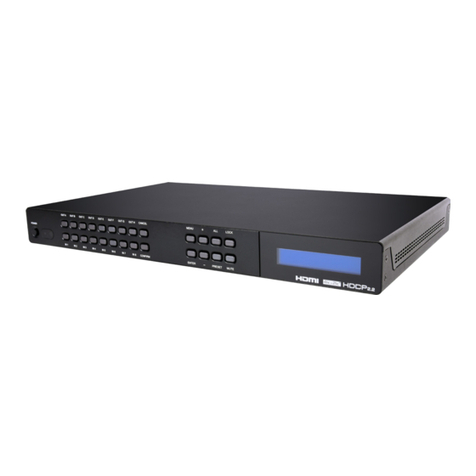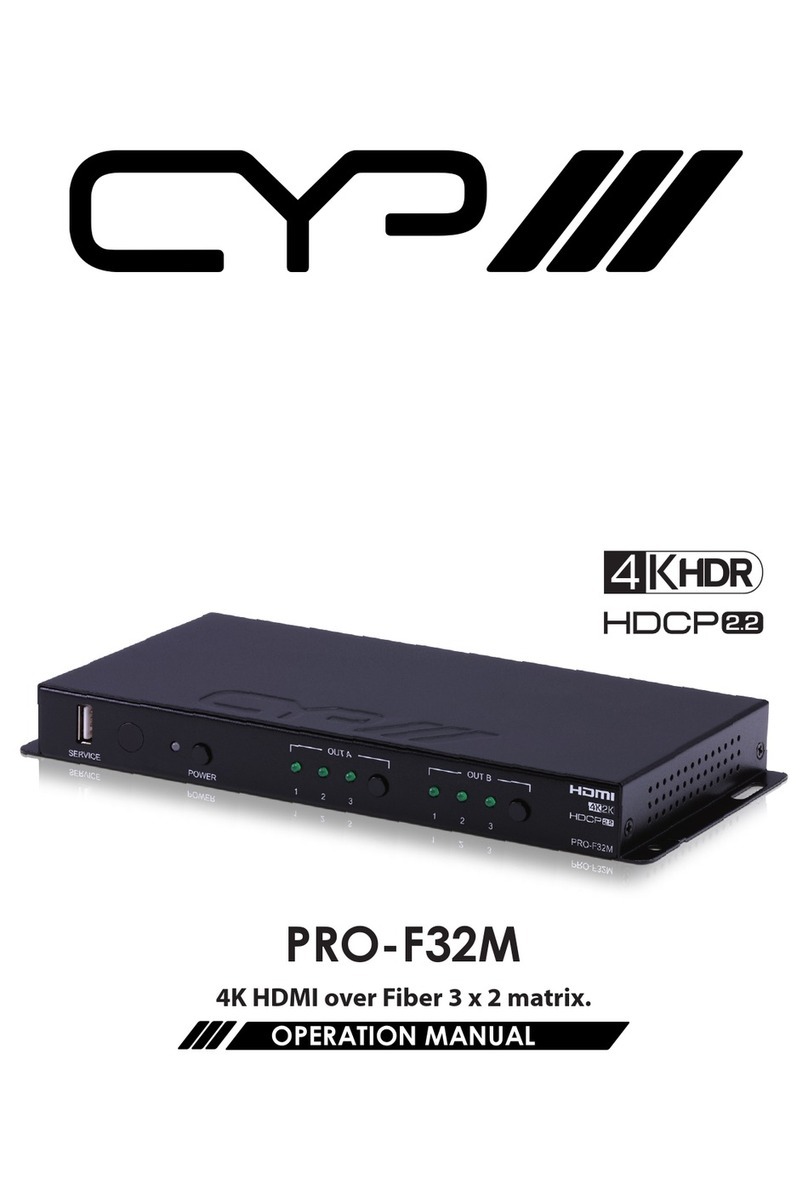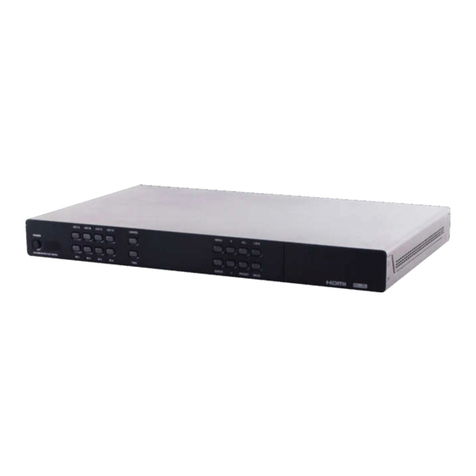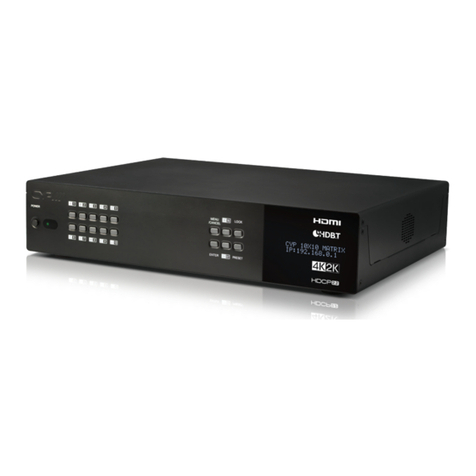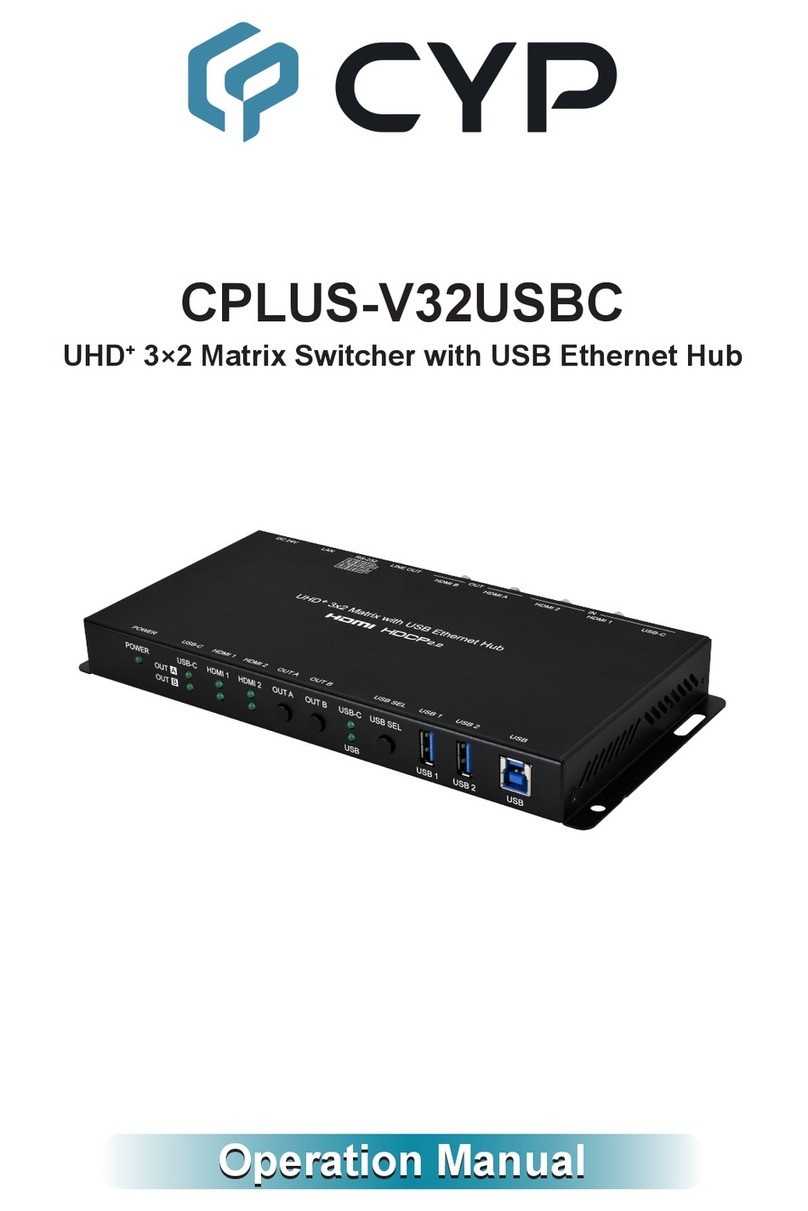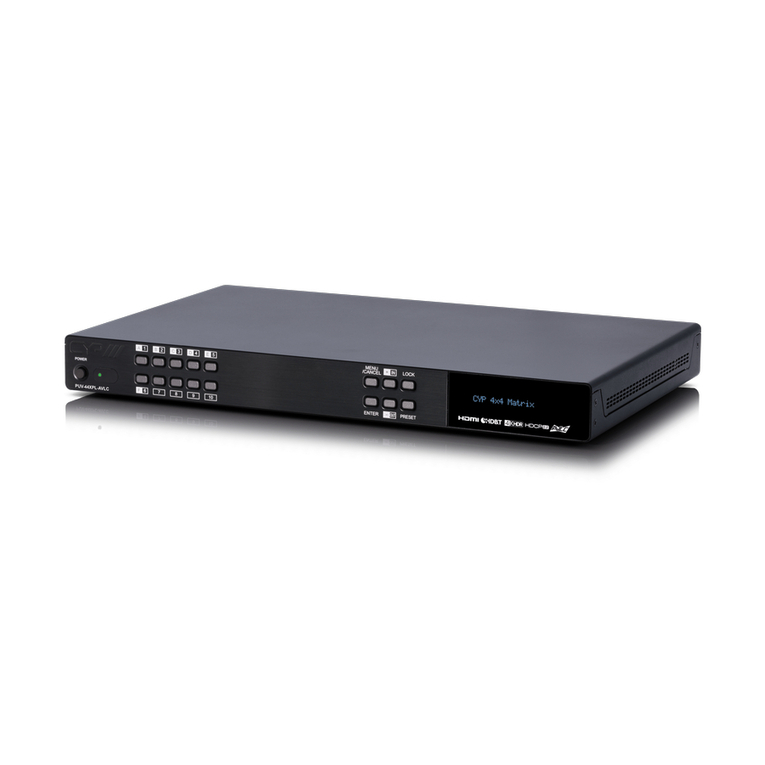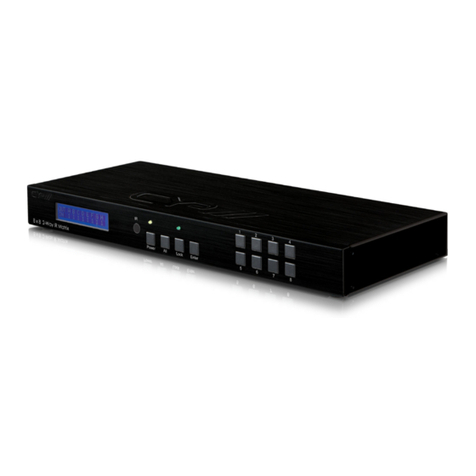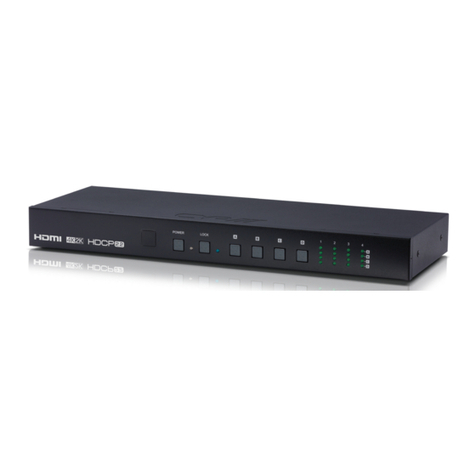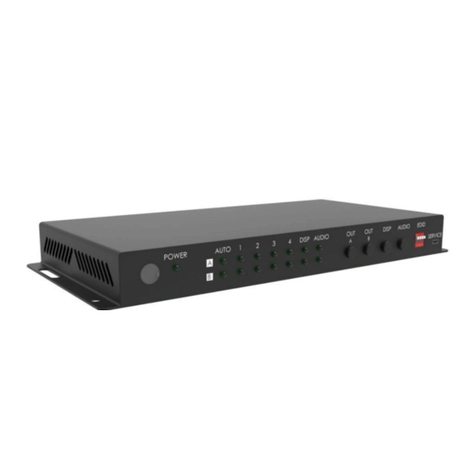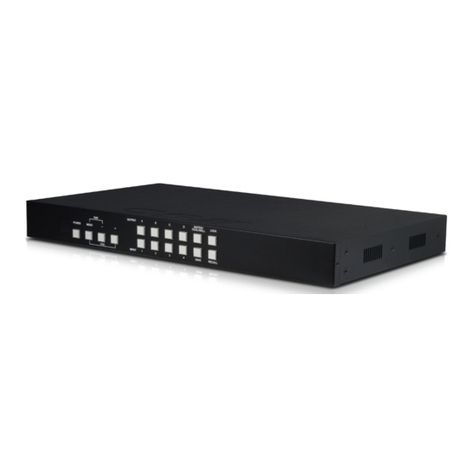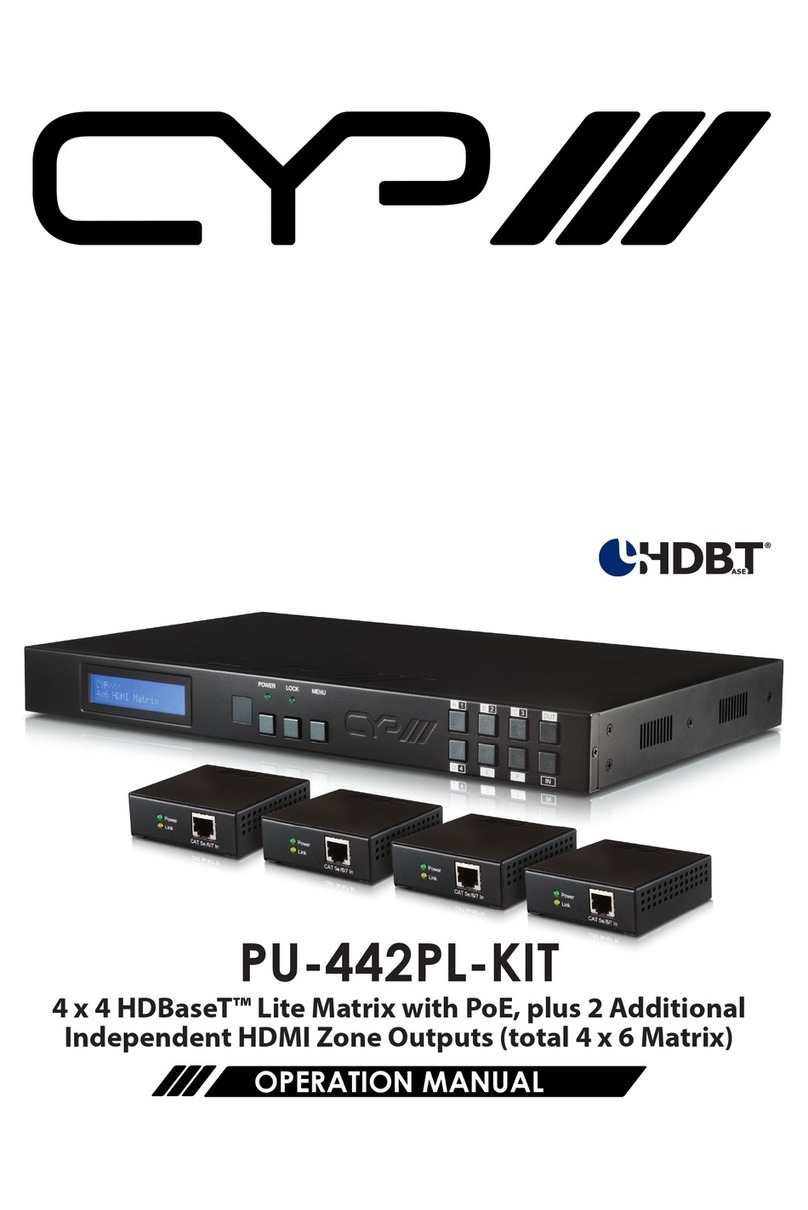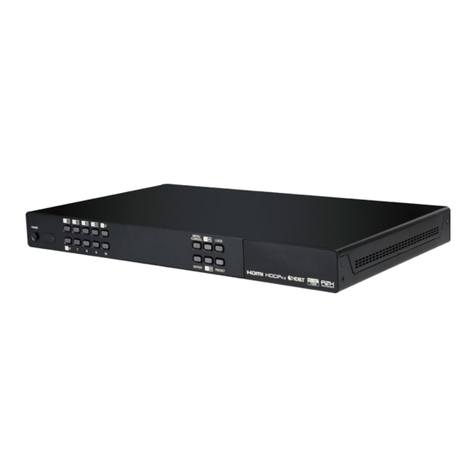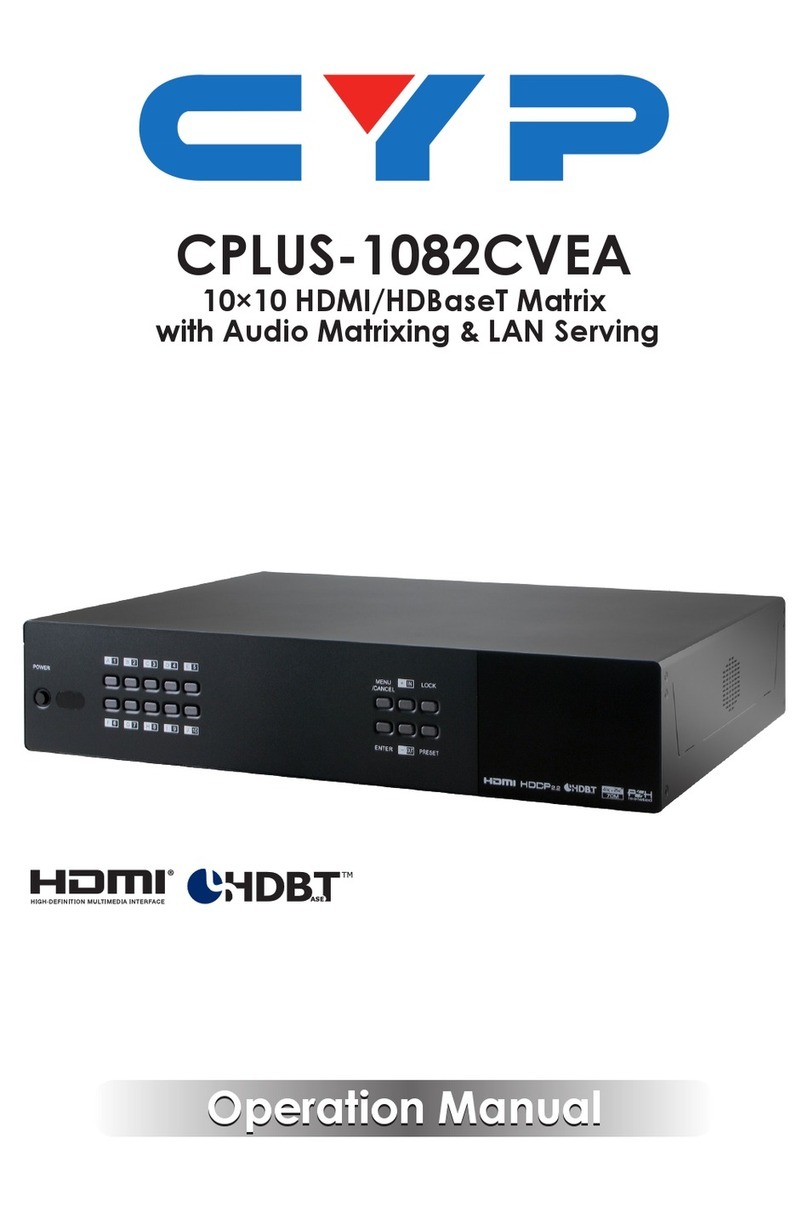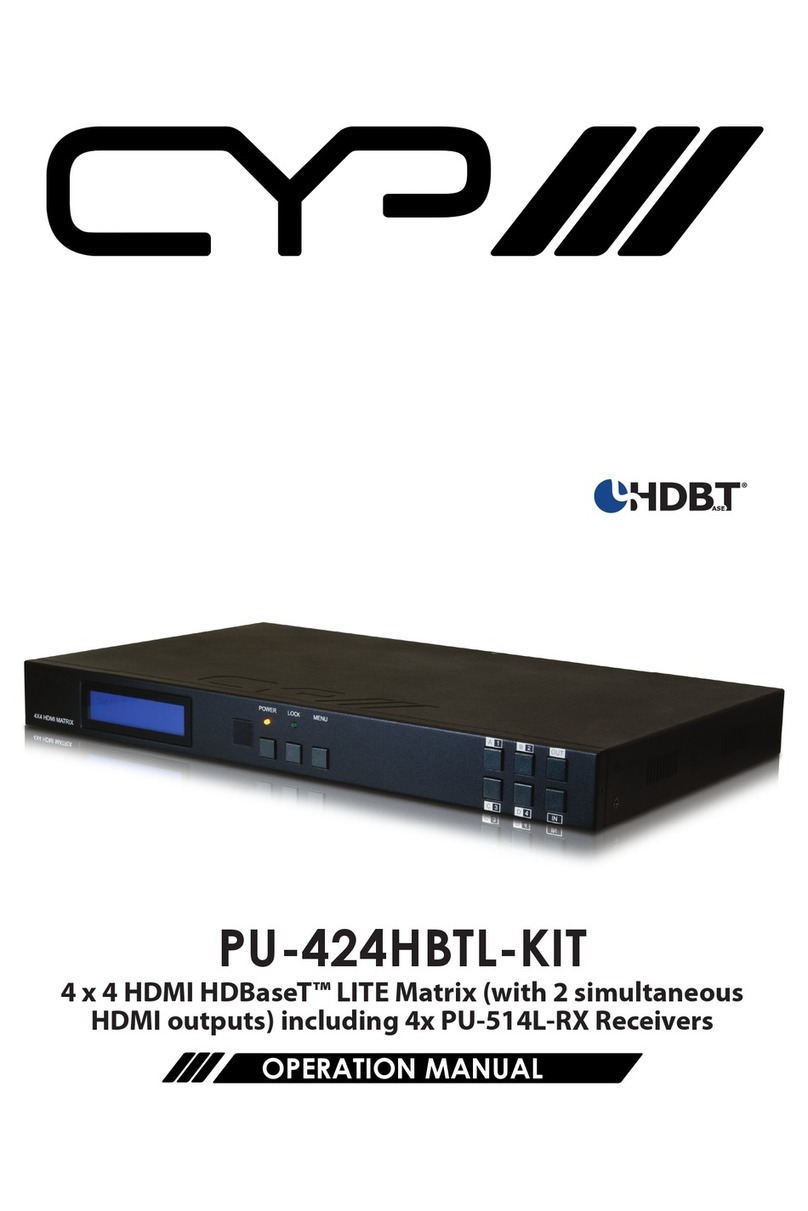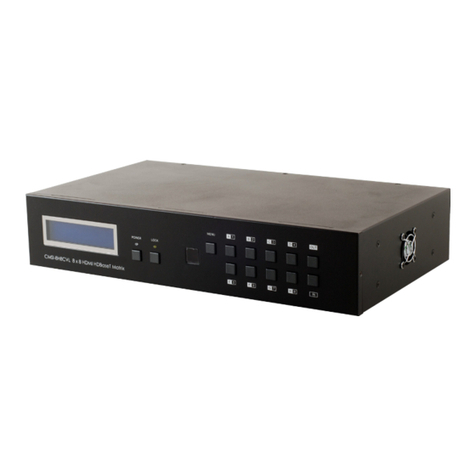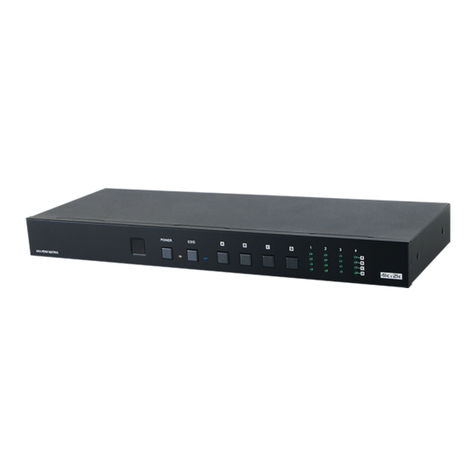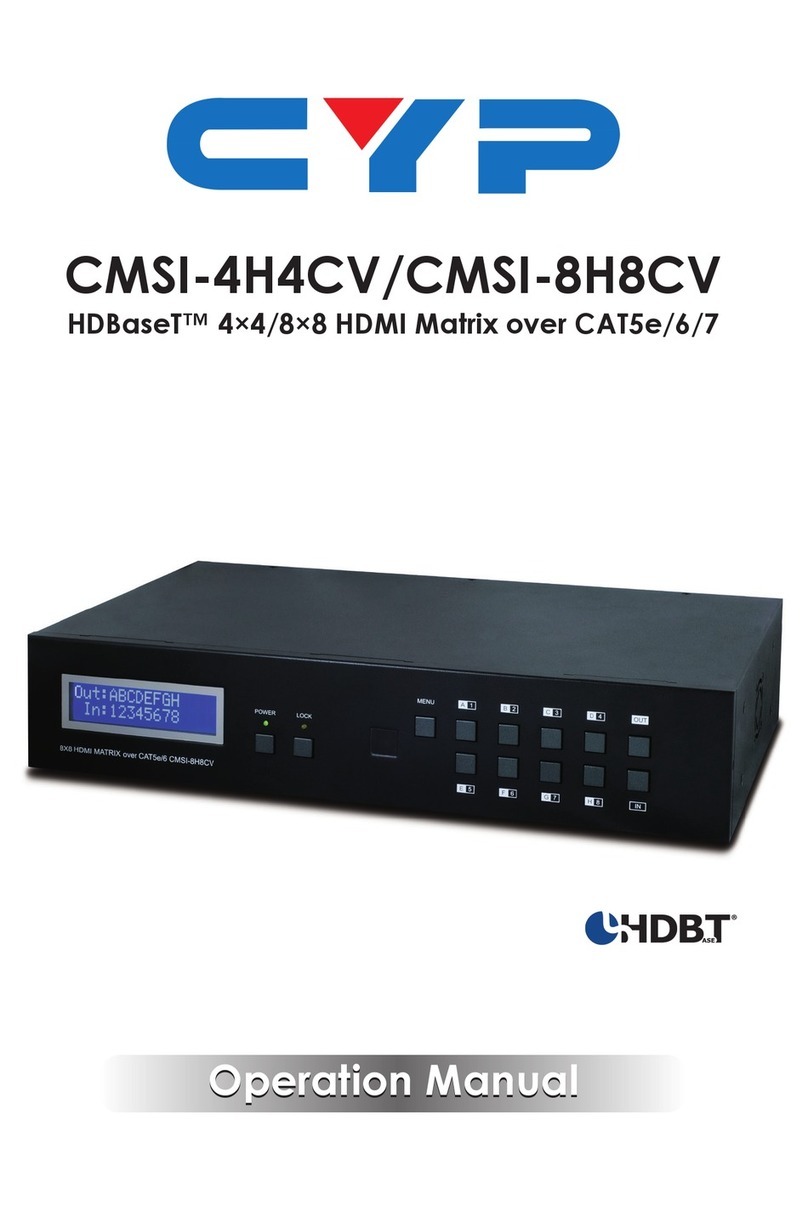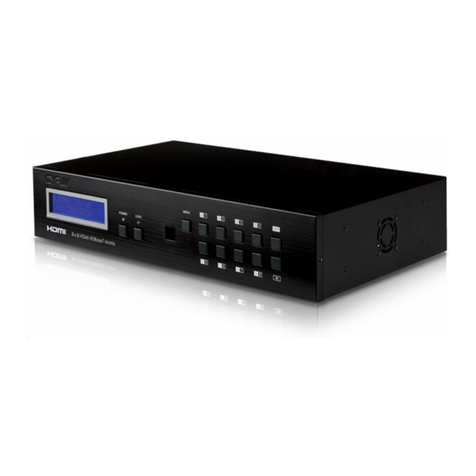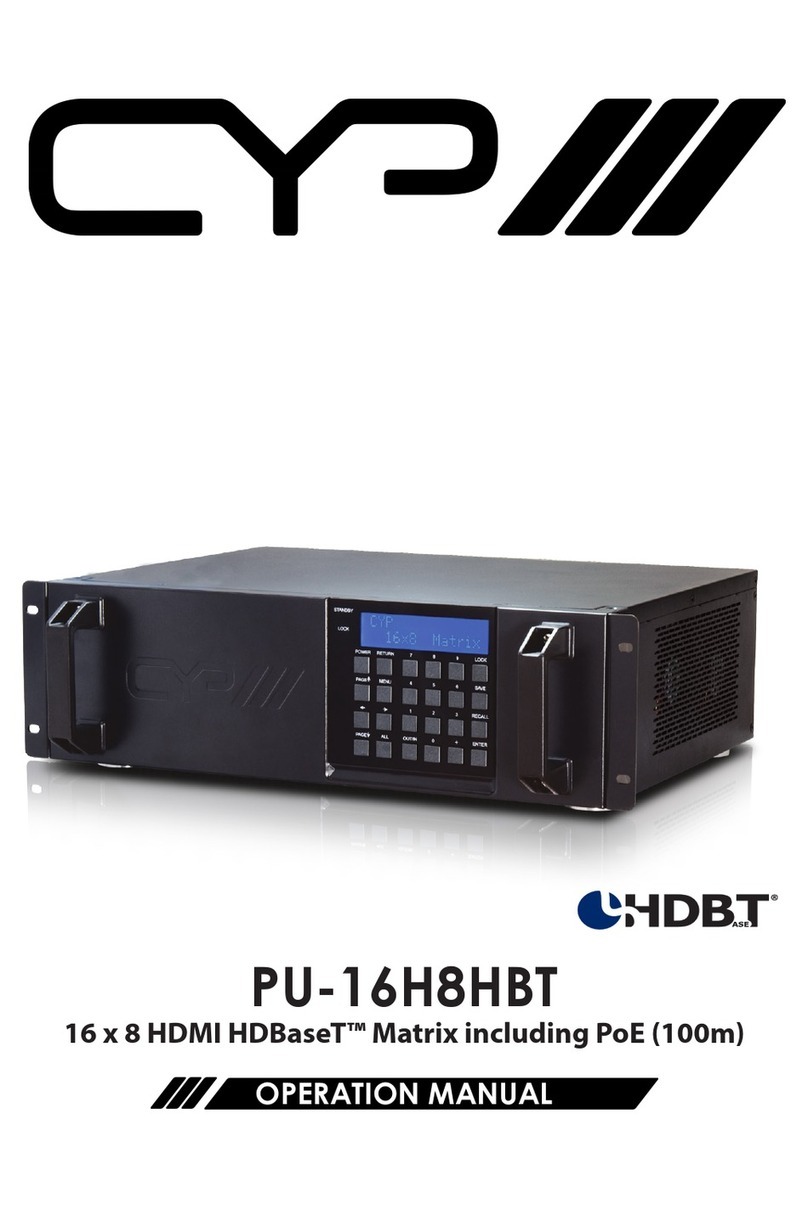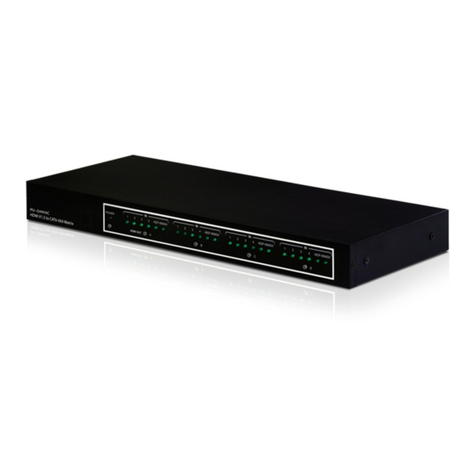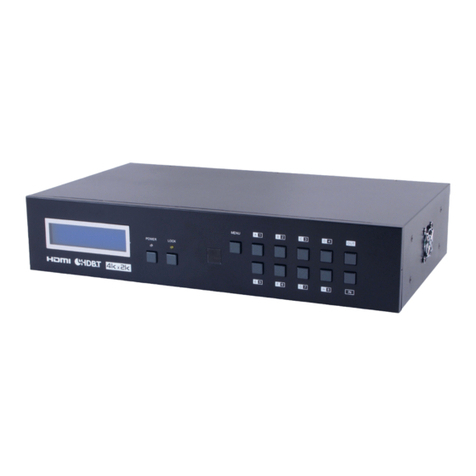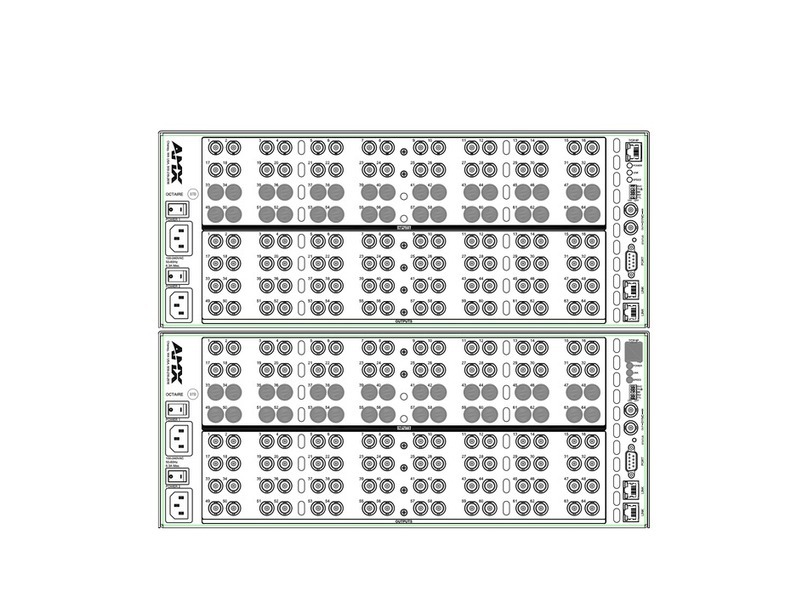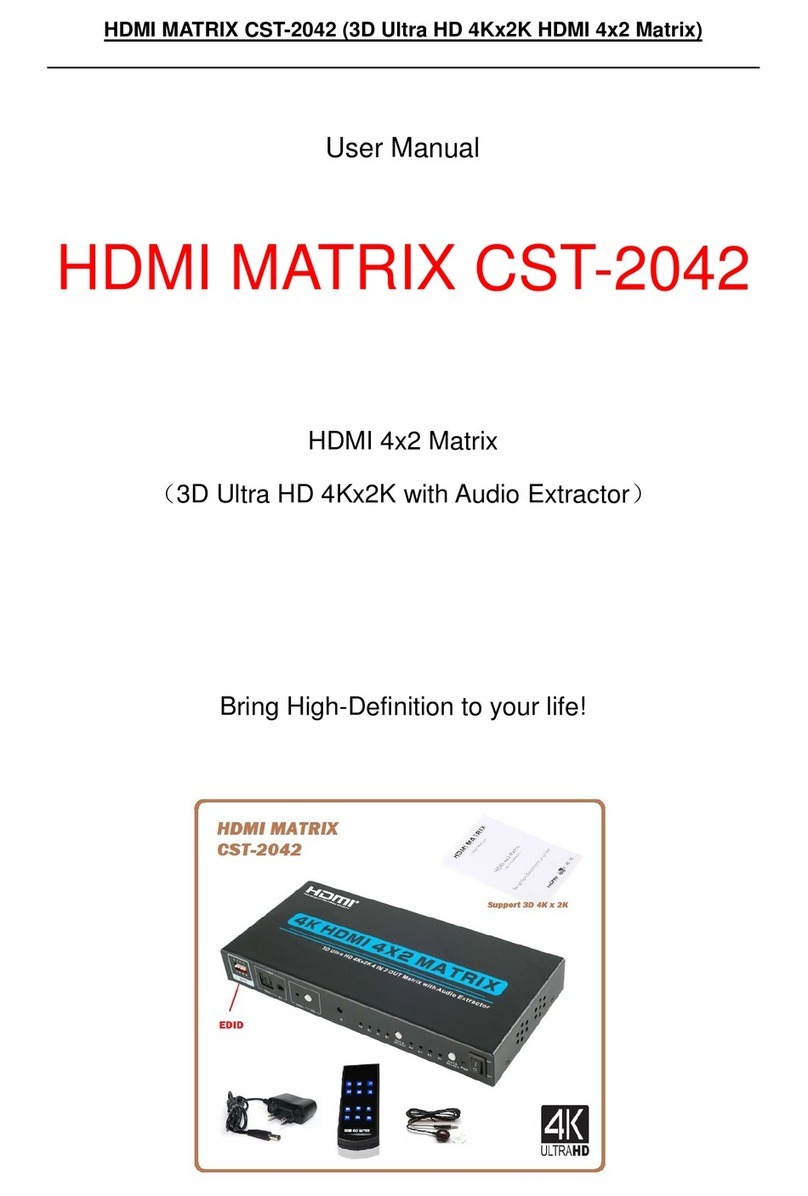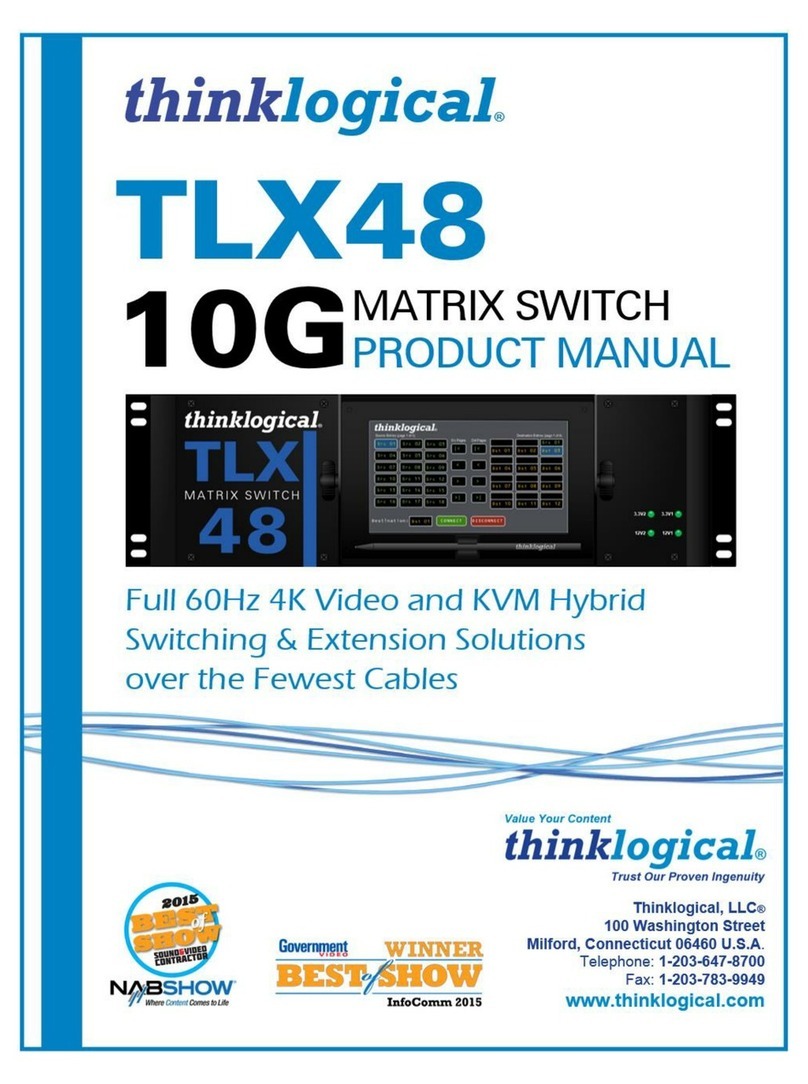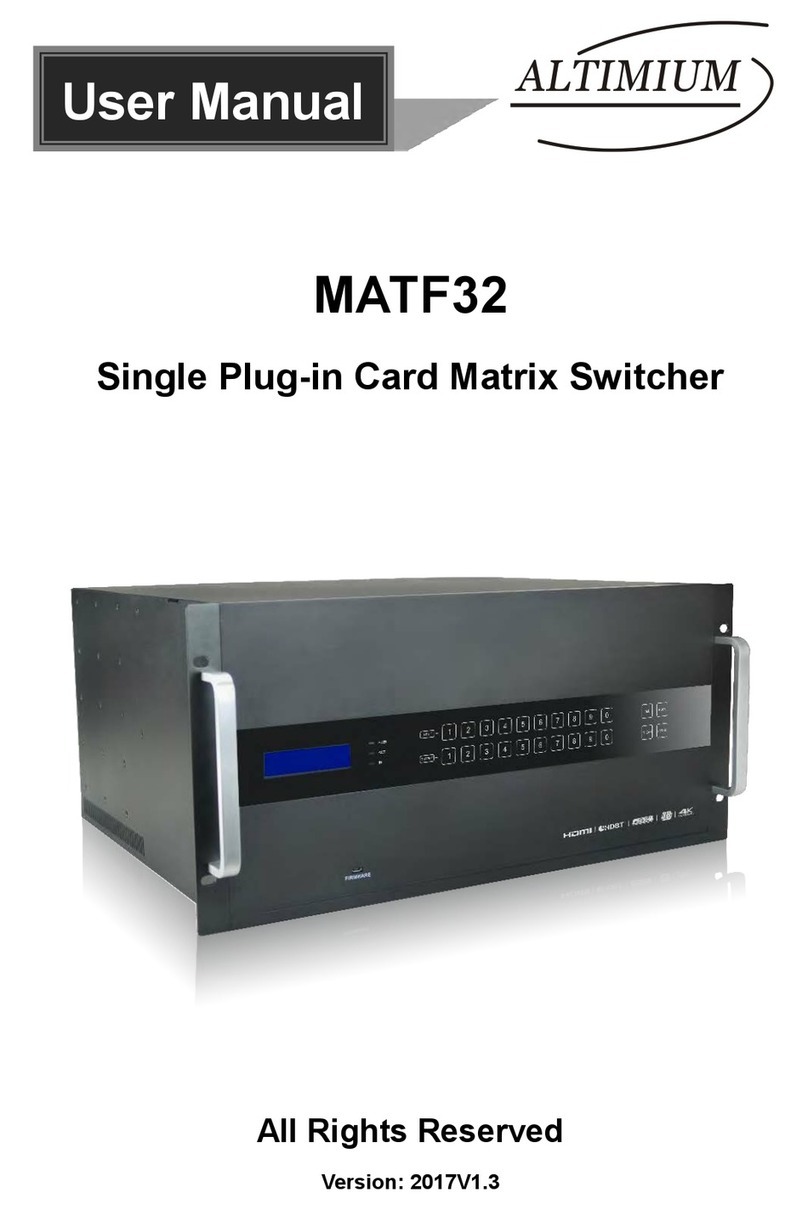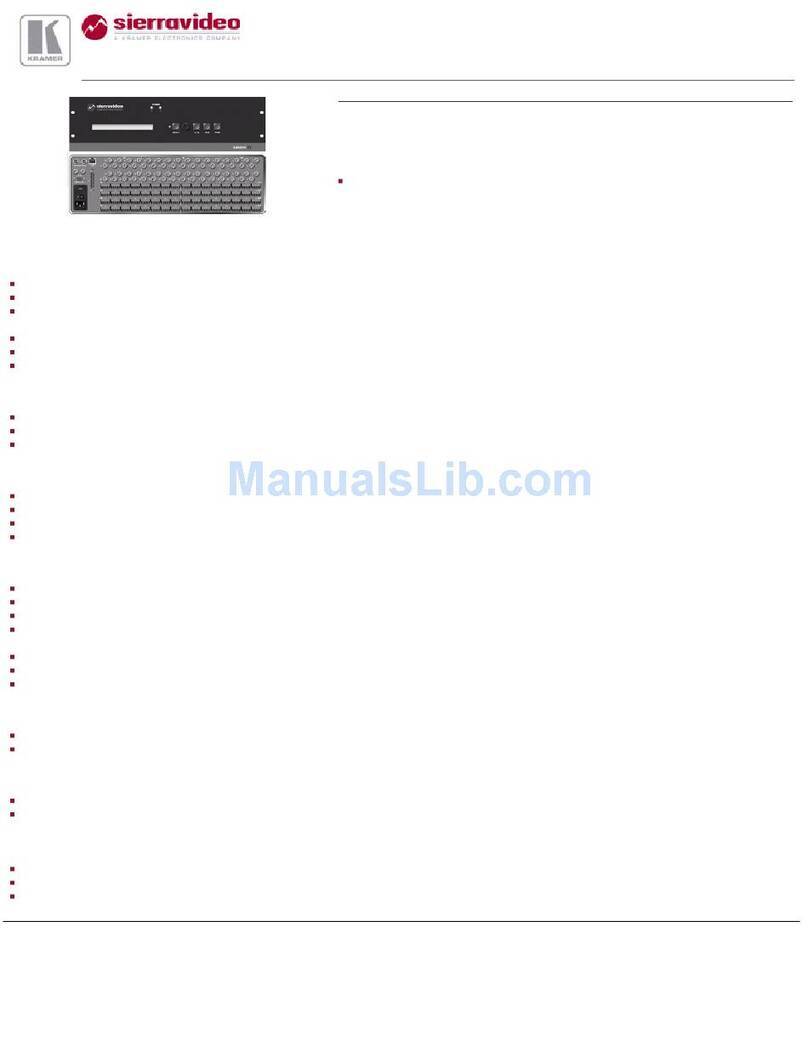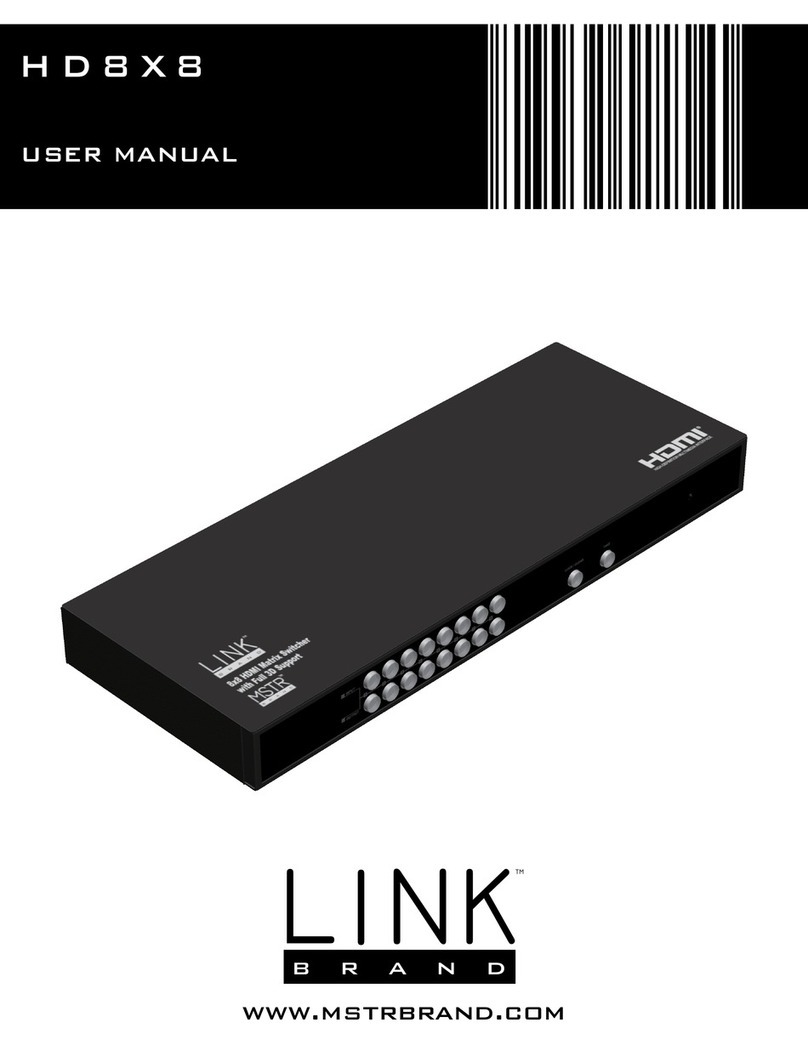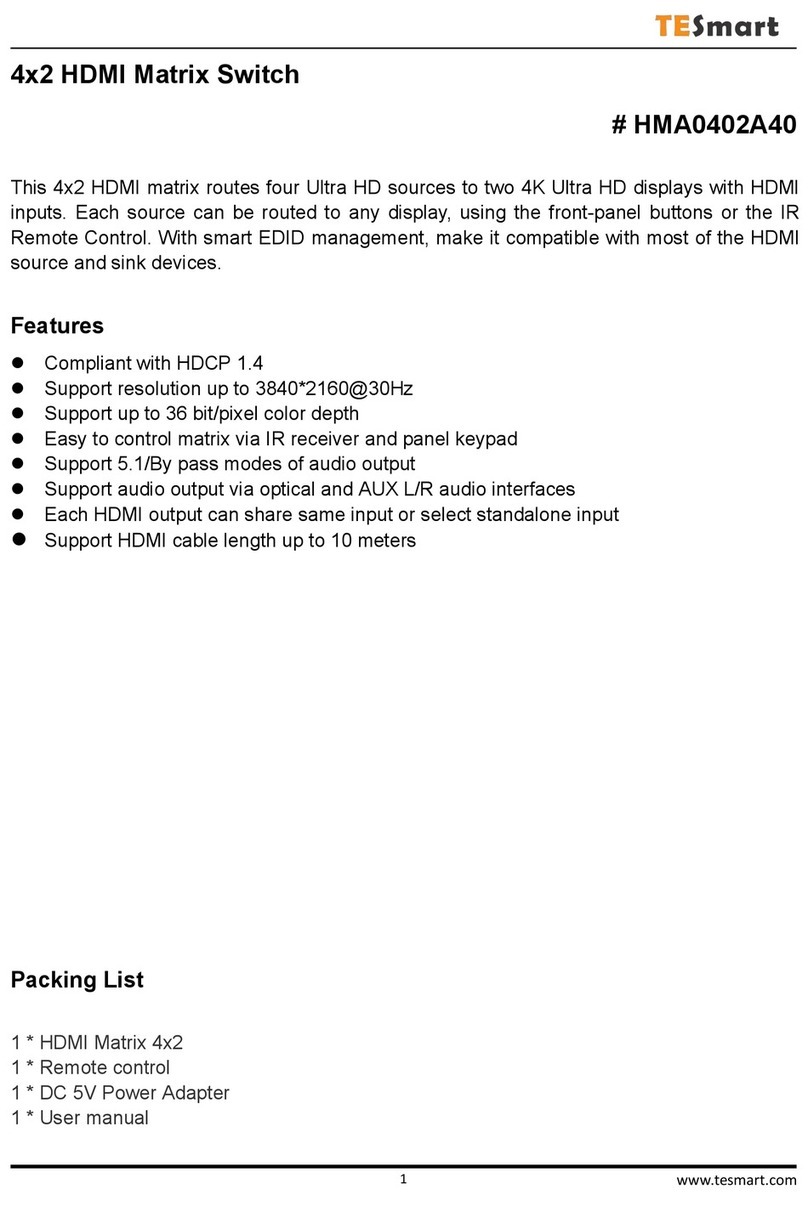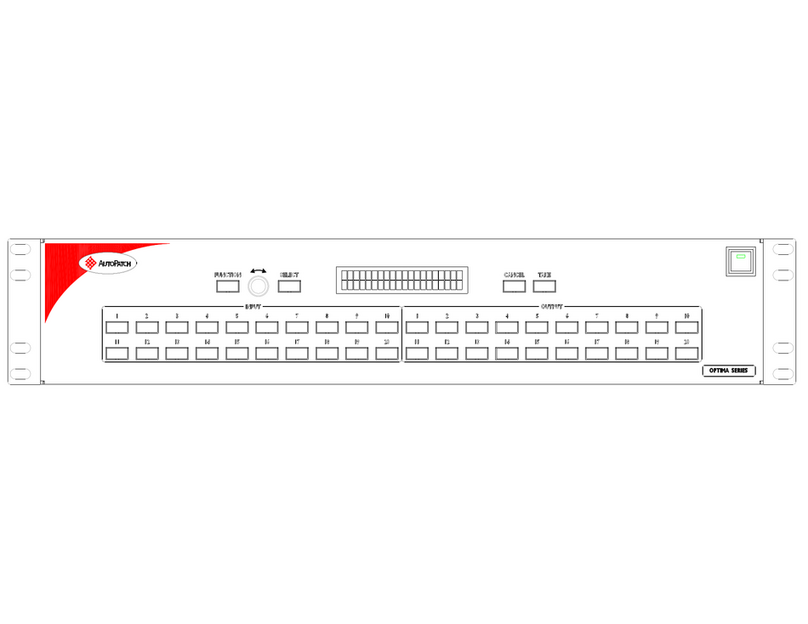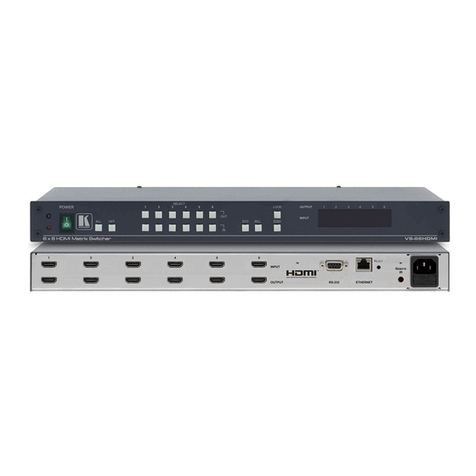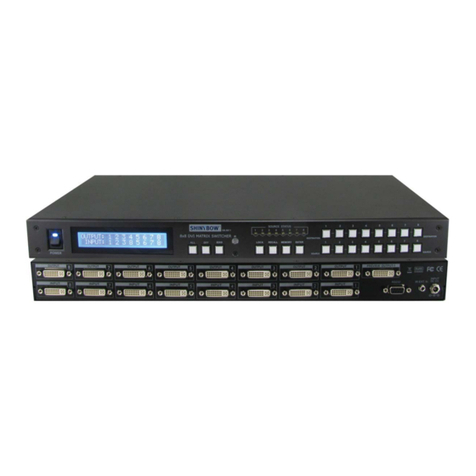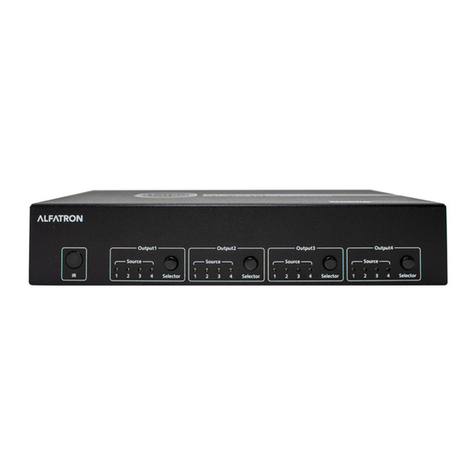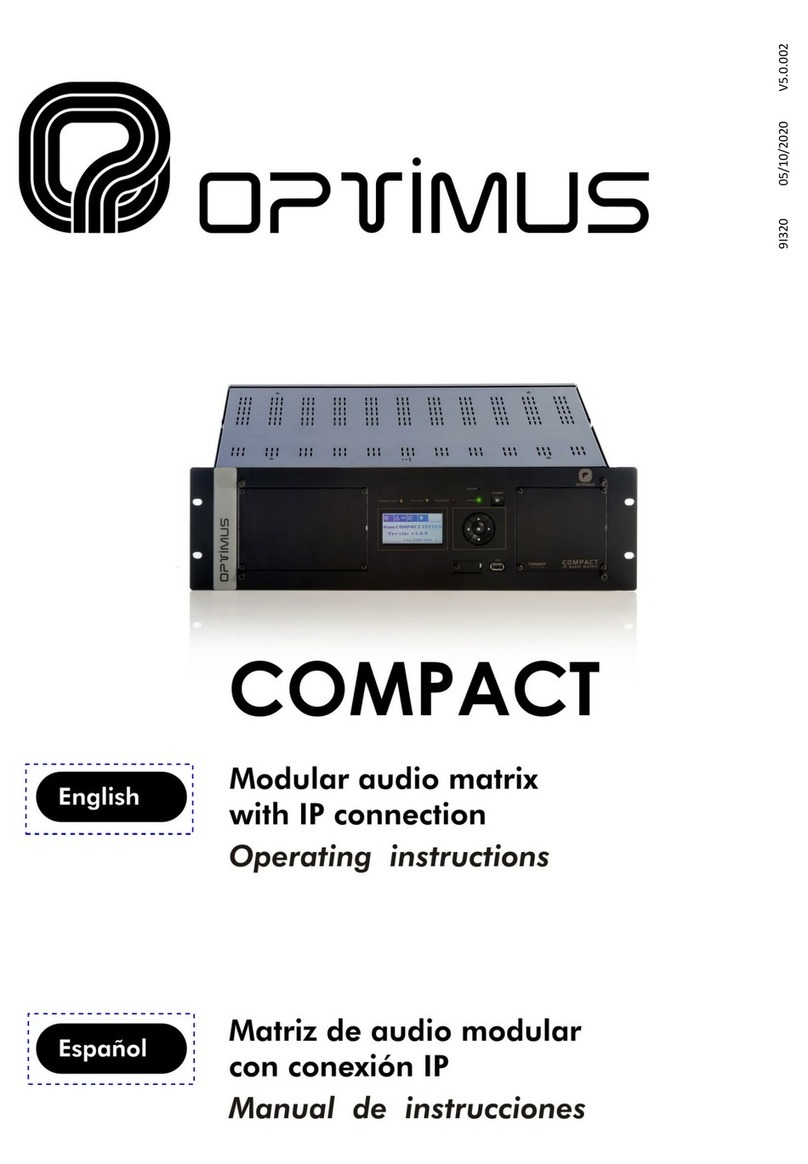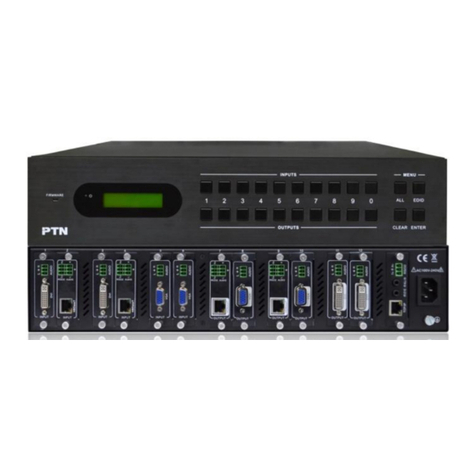5
5TRIGGER IN 1~8: Connect to any device with trigger or switch
functionality such as window security alarms, motion detectors,
door switches, etc. Each of the 8 trigger inputs will activate the
associated macro when triggered. The upper row of contacts
should be connected to the positive pins of your sources and the
lower row of contacts should be connected to the negative pins. If
the polarity is incorrectly aligned then the trigger won’t activate. A
minimum of 5V DC is required to activate the trigger.
6RELAY OUT 1~8: Connect to devices that support DC 0~24V/5A
relay trigger functionality to power or activate them via macro
commands.
7COM 1~2: Connect to RS-232 controllable devices to send
commands to those devices via macros. It is also possible to send
commands directly to your RS-232 connected devices via the
Ethernet connection. To do this, connect to the Unit using a Telnet
client via port 7501 (to send to COM 1) or port 7502 (to send to
COM 2). Once connected, any typed commands will be sent
directly to the appropriate COM port.
8LAN1~4: Connect any one port to an active Ethernet network to
allow it to control other devices on the network. The remaining 3
ports can be connected directly to other local devices you wish to
control.
9SERVICE: This slot is reserved for rmware update use only.
10 CONTROL: Connect directly, or through a network switch, to your
PC/laptop to control the unit via Telnet/WebGUI.
11 RS-232: Connect directly to your PC/laptop to send RS-232
commands to control the device. Please refer to section 6.6 for
more information.
12 IR IN: Connect the included IR Extender to extend the IR control
range of the unit itself. Ensure that the remote being used is within
direct line-of-sight of the IR Extender.
13 DC 5V: Plug the 5V DC power adapter into this port and connect it
to an AC wall outlet for power.
